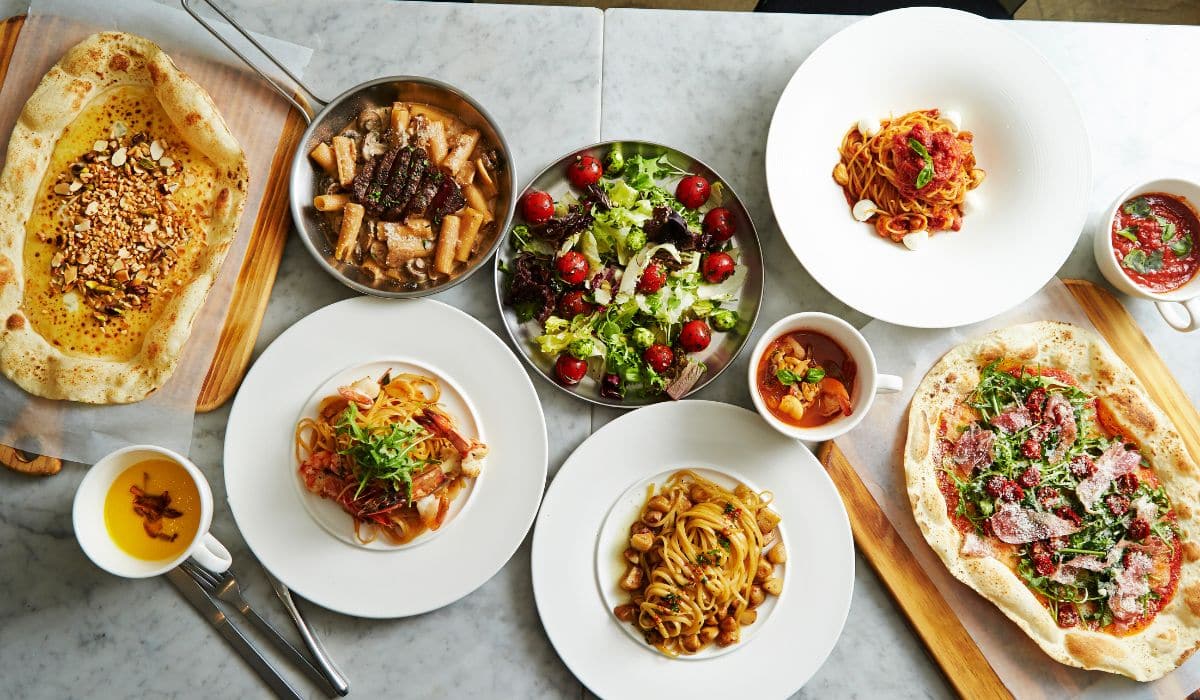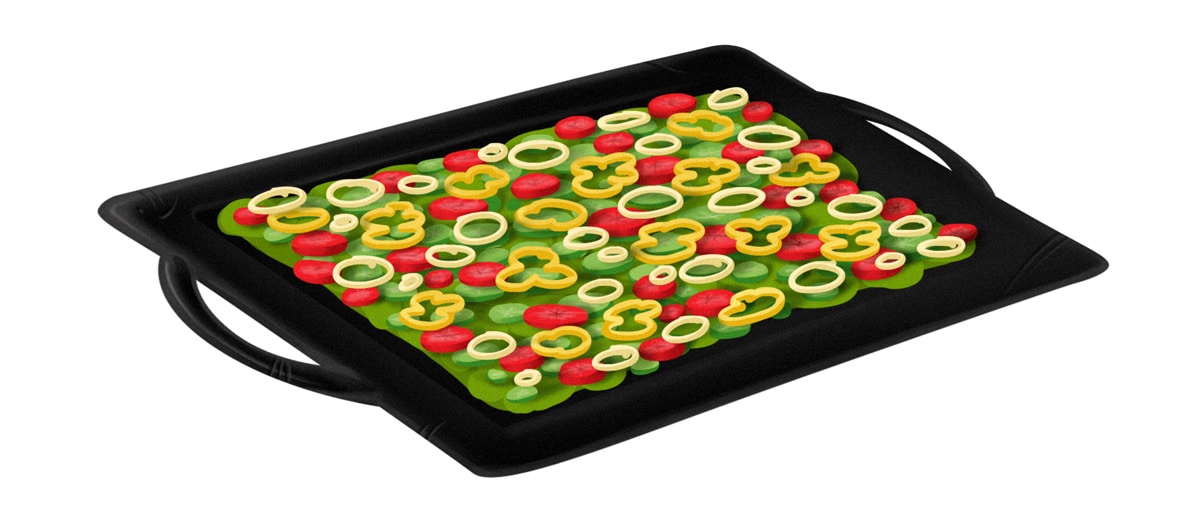
How many times have you read or watched something about modern portion sizes ballooning out of control? Every other week there’s a concerned news report about super-sizing or packaging trends, and there’s at least one famous documentary about it. The NIH even has a whole page on “portion distortion” - catchy name, sure, but is this really the best way to think about the way we eat?
Portion size seems to have an obvious connection with body weight - it’s so intuitive that a lot of people might not even demand evidence for claims like “larger portions cause weight gain.” When you sell 20-oz bottles of Coke instead of 8-oz cans, people drink more sugar. When the size of a “normal” muffin increases, people eat more processed flour and sugar. So the answer is to all stop stuffing our faces and eat less, right?
But that’s actually oversimplifying the issue. There’s another factor at play here, and there’s some evidence that manipulating the kind of food you eat can be more effective than trying to manipulate portion sizes. Take a look!
Meal size and weight
The short version: many people struggle with weight because when they’re eating a typical American diet, their natural desire to eat physically large meals causes them to eat too many calories for their optimal body weight. The solution isn’t to white-knuckle it and be hungry all the time; the solution is to change the way you add volume to your meals.
The details: A lot of research has found associations between meal size and weight. All other things being equal, when people are served physically bigger meals, they tend to eat more. Most of us subconsciously take cues about how much we “should” eat from the amount we’ve been served - we don’t rely purely on physical hunger and fullness. Over time, as restaurants super-size everything and standard portion sizes keep increasing, the average person has gained weight just by mindlessly going along with portion size increases.
But physical meal size is also biologically important because it lets our bodies “know” when we’re full. The human stomach is pretty stretchy, and a normal-sized meal fills it up enough to stretch it a bit, which actually sends signals through the nervous system to your brain to let you know that you’ve eaten.
So there’s an automatic and mindless element to this, but in another sense, it’s driven by a very deep physical need to feel satisfied.
Typical diet strategies (100-calorie snack packs, portion-control plates with measured sections for different foods, etc.) only address one of those two issues: large servings that cause mindless eating. But none of these “solutions” address the neurological signals that you get from having a big meal in your stomach. If your portion-plate meals and 100-calorie snacks don’t fill you up that way, you’ll still be hungry after meals and probably won’t stick with the portion control strategy for long.
You don’t have to choose between hunger and weight gain.
If “portion control” is your answer to everything, then the picture looks grim. But take a step backfor a second. Meal size is associated with weight gain in the context of a typical American diet. The typical American diet has a high energy density (a lot of calories per bite), and a high density of refined carbs and processed sugar. So when restaurants increase portion sizes, they’re rapidly increasing calorie and junk content.
But what if the volume in a big meal came from low-calorie-density foods instead? People tend to consume roughly the same weight/volume of food regardless of what they’re eating, so simply replacing a high-energy-density food (like pasta) with a low-energy-density food (like lettuce) can be magic. If you want to consider the amount of refined carbs in a food, the amount of industrial oils in a food, or any other measure of how “bad” the food is for you, the same rule applies: replace the high-sugar-density food with a low-sugar-density food, and so on.

To illustrate that point, these researchers fed women four different meals and tested how much they ate in a day. The results:
- High energy density meals, large portions: 1,946 calories
- High energy density meals, small portions: 1,817.7 calories
- Low energy density meals, large portions: 1,761.4 calories
- Low energy density meals, small portions: 1,669.7 calories
The point: lowering energy density naturally reduces calorie consumption, even if physical meal sizes stay large.
In fact, decreasing energy density is even more effective for reducing calorie consumption than decreasing portion size. In this study the authors directly compared the two: a 25% decrease in energy density reduced energy consumption by 24%, while a 25% decrease in portion size reduced energy consumption by only 10%.
That’s how you can get filling meals but also get regular weight loss: add volume with vegetables and other low-calorie-density foods. A good way to start building meals is:
- Start with some high-quality animal protein (about ¼ of the plate)
- Add healthy fat (1-2 tbsp. - less if your protein is really fatty, like bacon).
- Add carbs to your personal preference/tolerance.
- Add vegetables until your plate “looks like enough” to you. Research shows that expectations of fullness are huge for actual feelings of satisfaction, so if it “looks like enough” and you expect it to be filling, it probably will be.
Here's more on how to build a Paleo meal. This method gives you a meal that’s personalized to your appetite (unlike a mass-produced portion control plate), and also doesn’t force you to choose between weight loss and satisfaction.
Bonus! Low-energy-density foods may also naturally reduce portion sizes
At this point, the obvious question is, “if reducing portion size helps, and reducing energy density also helps, why not both?”
The answer: reducing energy density by improving food quality might naturally also reduce portion size. When you replace junk food and grains with vegetables, you’re also eliminating hyper-palatable foods that are designed to be so tasty that they overwhelm your “stop” signals. You might find that once you’re not eating junk food engineered for addictiveness, the amount you need to feel full is actually smaller than you thought! But by letting this happen naturally instead of forcing it with portion plates and food scales, you can customize it specifically to your own body and not feel hungry in the meantime.
The exception: smaller meals for GI issues
Functional dyspepsia is a fancy term for problems in the upper part of the digestive tract (heartburn, stomach pain, belching, etc.), if there’s no clear reason for the symptoms.
People with functional dyspepsia are hypersensitive to gastric distention. In other words, they have a lower “maximum tolerable volume” of food that they can stand to have sitting in their stomach at any one time.
For those people, smaller meals might actually be helpful to control symptoms - at least in the short term. Folks with functional dyspepsia might want to avoid bulking up meals with vegetables, and instead focus on really high-nutritional-value vegetables (think kale over lettuce, collard greens over cucumbers) in smaller amounts. A full discussion of food and functional dyspepsia is way outside the scope of this post, but Paleo folks may be interested to note the evidence connecting wheat and fat to symptoms. A lower-fat, higher-carb, wheat-free Paleo diet might be something to try out.
Summing it Up
The push for “portion control” and smaller portion sizes does have some reason behind it, but it

doesn’t really account for the way people like to eat and the important satiety effect that larger meals can have for some people. A better strategy - and one that’s proven more effective in studies - is to change the type of food you eat, so that you can load up on low-calorie-density foods and get the benefits of relatively large portions without the weight gain.
On Paleo, there are only a few, snack-type foods where some people might really need to worry about portion control: if you tend to overeat nuts, dried fruit, and Paleo “treats,” then restricting serving sizes (e.g. by using separate baggies) might be helpful since most people don’t want to bulk up their Paleo cookies with a lot of spinach. But in general, eating satisfying meals and losing weight shouldn’t be incompatible on a Paleo diet.





Leave a Reply